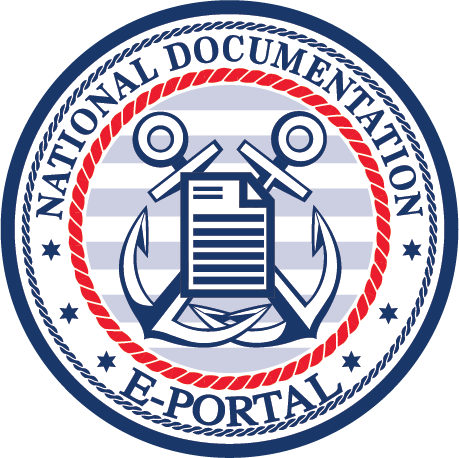Selling or buying a boat can be a complex process, especially so (and perhaps surprisingly so), when the sale is “as is.” An “as is bill of sale for a boat” carries specific implications for both the buyer and the seller, and understanding how to draft one correctly is important. At the National Documentation Portal, we help vessel owners understand the ins and outs of USCG-documented vessels. While we do not offer a specific form for an “as is” sale of an undocumented vessel, we do offer everything you may need if your vessel qualifies for documentation.

We’re here to help vessel owners with documentation, renewals, transfers, and more. Below, we’ll break down what an “as is” bill of sale typically includes, what it legally means, how to draft one, and how it may connect with documentation requirements.
What Should Be Included in an As Is Bill of Sale for a Boat
An “as is” bill of sale for a boat must include all the standard elements of a typical bill of sale, in addition to clearly stating that the vessel is being sold “as is.” The goal is to outline the terms of the sale clearly and protect both parties from future disputes.
A well-drafted boat bill of sale generally includes the following:
- The full legal names and contact information of both the buyer and the seller
- A clear description of the boat, including make, model, year, Hull Identification Number (HIN)
- The sale amount
- The exact date of the transaction
- A statement that the boat is being sold “as is,” meaning the seller makes no guarantees about the condition of the vessel
- Any included accessories or additional items (trailers, life jackets, electronics, etc.)
- Signatures of both parties and, if required by the state, a notary’s acknowledgment
We always recommend that the language in the “as is” section be as specific as possible. For example, stating that the vessel is sold “as is, with all faults and defects, known or unknown” can help protect the seller and alert the buyer to accept responsibility for any post-sale discoveries.
How an “As Is” Sale Affects the Sale
When a vessel is sold “as is,” it means the seller is not offering any warranties about the boat’s condition. The buyer agrees to accept the vessel in its current state, regardless of any defects or repairs that may be needed in the future.
Legally, this can shield the seller from liability, but it doesn’t remove all obligations. Sellers are still expected not to commit fraud or intentionally hide serious known issues. It’s one thing to sell a boat that’s seen some wear—it’s another to withhold information about major structural damage or other safety risks.
For buyers, this type of transaction usually means there is more risk involved, but it also often comes with a lower price. Buyers should conduct thorough inspections or even hire a marine surveyor before signing.
The language used in the bill of sale should reflect this condition explicitly. Adding a clause such as “The Buyer accepts the Vessel in its current state, as is, and assumes all responsibility for its condition after the date of sale” can provide additional clarity. Usually, the more information you provide, the better.
How to Write Your Own “As Is” Bill of Sale Document
Yes, buyers or sellers may write an as is bill of sale if all legal details and requirements are included correctly. While many websites offer generic templates, writing one yourself tailored to your transaction can be just as effective.
Start with the basics: buyer and seller details, boat description, and date of sale. Then, include a clear, unambiguous “as is” clause. You may also want to list the purchase price both numerically and in words to avoid confusion.
When including extras like a trailer, registration, or equipment, list those items clearly in the as is bill of sale. After finalizing the document, both parties should sign it and, if required, add notary or witness signatures as needed.
What We Offer If You Decide to Document Your Vessel
While a bill of sale is necessary in almost any boat transfer, federal documentation applies to vessels meeting specific criteria. If your boat is five net tons and used commercially, federal documentation may be required or chosen for legal purposes.
At the National Documentation Portal, we offer a simplified path to federal documentation.
Our platform was built to help vessel owners and operators file quickly and with ease. Instead of navigating paper forms and mailed submissions, you can handle your documentation online through our secure portal.
Any bill of sale—“as is” included—is necessary when applying for, or transferring, vessel documentation through the proper authorities. Federal documentation requires your bill of sale to show accurate vessel information and complete ownership history without missing details.
Where an “As Is Bill of Sale for Boat” Fits Into the Bigger Picture
A properly prepared “as is bill of sale for boat” can stand on its own for many state-level transactions. However, for those planning to move toward federal documentation, or for those buying or selling vessels already documented with the U.S. Coast Guard, it’s important that the bill of sale aligns with official records. Even in “as is” sales, documentation matters.
We’re here to support owners of documented vessels with renewals, reinstatements, abstract of title requests, and other services. We don’t offer downloadable as is forms, but we support compliant, federally accepted documentation through our tools and services.
If your vessel qualifies, find all documentation forms for as is purchases directly available through our secure, online portal. Our platform simplifies ownership updates, renewals, or new applications with expert help, easy forms, and reliable processing tools. To see how we can help, check out our site.

